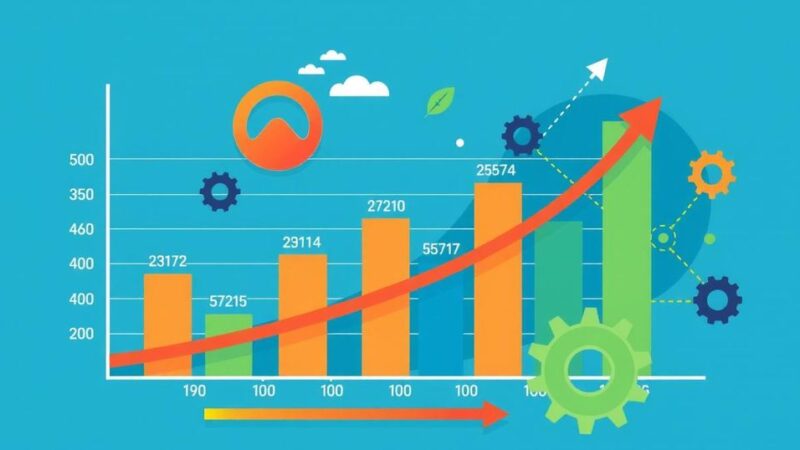Colombia’s inflation has surged to 5.28%, exceeding the central bank’s 3% target. Plans for interest rate cuts may be reconsidered in light of persistent inflation. Investors should monitor potential changes in monetary policy, which could impact market dynamics and economic growth.
Colombia recently experienced a significant increase in inflation, which surged by 1.14% in February, leading to an annual rate of 5.28%. This rise is considerably above the central bank’s target of 3%, prompting speculation regarding future interest rate decisions. Expectations for a possible 25 basis point rate cut this month, as indicated by a Citi survey, may now be reconsidered due to ongoing inflationary pressures.
As inflation persists at 5.28%, the central bank’s intention to lower interest rates may need to be reassessed. The current rate has been maintained at 9.50% since January, highlighting a cautious approach amidst fiscal uncertainties. Analysts, including those from XP Investments, suggest that changes in leadership under President Petro might influence monetary policy decisions in the near future, with Credicorp Capital predicting a potential easing to 8% by year-end.
The implications of inflation on financial markets are profound, as investors closely monitor changes in Colombian monetary policy. The prevailing inflation could significantly impact investor confidence and market dynamics, prompting institutions such as Scotiabank to reevaluate their positions. Any decisions made by the central bank will likely alter market sentiment and influence investment strategies accordingly.
The central bank of Colombia confronts the challenge of managing inflation while promoting economic growth. As inflation continues to rise, factors such as global economic conditions, fiscal policies, and new appointments within the bank could shape the direction of interest rates, ultimately affecting monetary strategies and investment flows both within and external to Colombia.
In summary, Colombia’s inflation has surpassed expectations, raising concerns about potential interest rate cuts by the central bank. The persistently high inflation rate of 5.28% significantly diverges from the target of 3%, prompting a cautious stance regarding future monetary policy. As the central bank navigates the complexities of managing inflation alongside economic growth, investors must remain attentive to how these developments may influence the financial landscape.
Original Source: finimize.com






